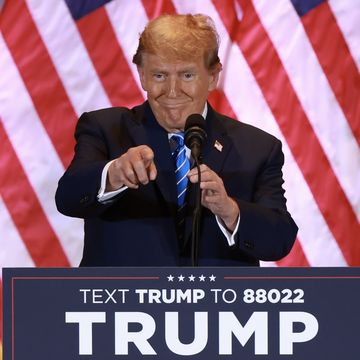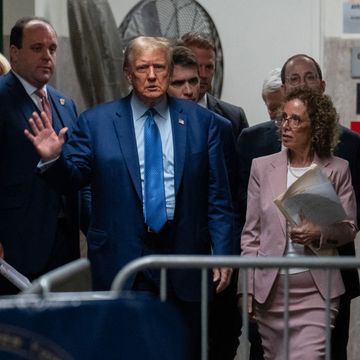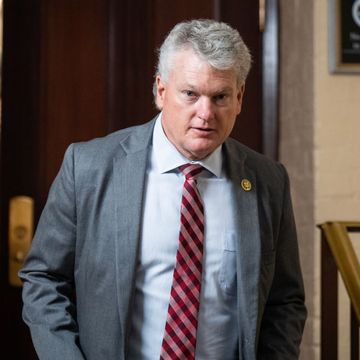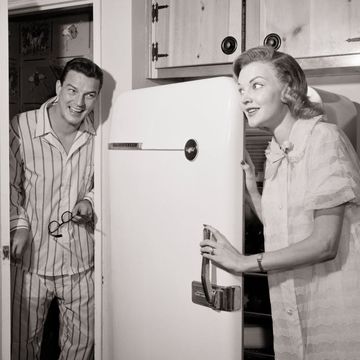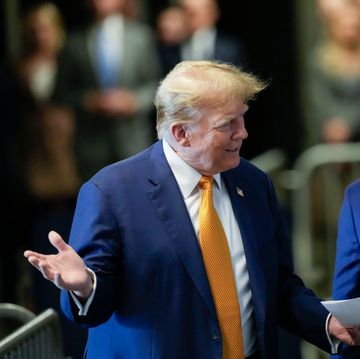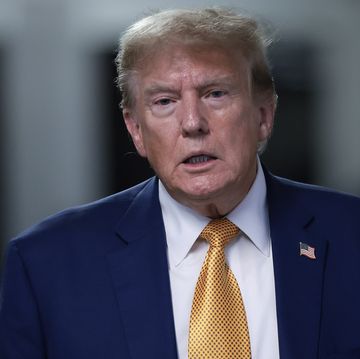WASHINGTON, D.C.—It was a big day for guns Monday on both sides of First Street, under the steadily melting trees and atop the steadily liquefying sidewalks. In the afternoon and evening, the U.S. Senate was going to take up debate on four bills that would partially control this country's reckless love for its firearms. This promised to be quite a show, if not an entirely productive one, since it was not likely that any of the four bills would pass.
But, in the morning, the Supreme Court—still killing penalties one skater down—took up a narrower version of the question. Ruling on the case of Shew v. Malloy, the Court refused to hear a case that would have struck down a Connecticut law banning the sale and possession of a large assortment of semiautomatic rifles and large-capacity magazines. (The Court also let stand a similar law in New York.) The Connecticut law had been passed in the aftermath of the massacre at Sandy Hook Elementary School in 2012.
In 2008, in District of Columbia v. Heller, a sharply divided Court ruled 5-4 that an individual right to bear arms existed under the Constitution. Since then, however, it has allowed state and localities to fashion their own gun control laws. First, last December, the Court refused to hear a Second Amendment challenge to a ban on semiautomatic assault weapons and large-capacity magazines enacted in Highland Park, Illinois. (Justice Clarence Thomas and the late Antonin Scalia went up the draperies over this.)
Monday's ruling is of a piece with that one, and it makes clear why the latest bleating from Wayne LaPierre is emphasizing what he calls "national carry reciprocity," because it's pretty plain that even back when it was at full strength, there was a majority on the Court that believed that the Heller ruling was not absolute, and that local governments were free to enact sensible restrictions that would pass muster at the Court.
At the federal district court level, the decision handed down in favor of the state restrictions went out of its way to put paid to almost all the familiar propaganda tropes that likely will come rising like swamp beasts during Monday evening's debates. Judge Alfred Covello was conspicuously unimpressed with the purely ludicrous idea that, if you don't know precisely what an "assault weapon is," you shouldn't involve yourself with the issue of weapons that can kill 49 people at a sitting.
The legislation defines an assault weapon as any of a number of specifically listed makes and models of semiautomatic centerfire rifles, semiautomatic pistols, or semiautomatic shotguns (collectively, hereinafter "semiautomatic firearms") "or copies or duplicates thereof with the capability of" such, that were in production prior to or on April 4, 2013. In addition, the legislation bans an individual from possessing parts of an assault weapon that can be "rapidly" put together as a whole assault weapon. The legislation further provides that a firearm can qualify as an assault weapon even if it is not specifically listed in the statute as long as it meets one of several criteria. This is sometimes referred to as the "one-feature" test. Under this test, an assault weapon is "[a] semiautomatic, centerfire rifle that has an ability to accept a detachable magazine" and has either:
(I) A folding or telescoping stock;
(II) Any grip of the weapon, including a pistol grip, a thumbhole stock, or any other stock, the use of which would allow an individual to grip the weapon, resulting in any finger on the trigger hand in addition to the trigger finger being directly below any portion of the action of the weapon when firing;
(III) A forward pistol grip;
(IV) A flash suppressor; or
(V) A grenade launcher or flare launcher...
A semiautomatic pistol with a detachable magazine and a semiautomatic shotgun[22] that include similar features are also considered assault weapons. Finally, a semiautomatic, centerfire rifle that has a fixed magazine with the ability to accept more than ten rounds or that has an overall length of less than thirty inches, as well as a shotgun with the ability to accept a detachable magazine or a revolving cylinder are prohibited as assault weapons.
I, for one, am cool with the state banning grenade launchers.
The Second Circuit Court of Appeals went a bit further on this subject in its refusal to overturn the Connecticut law. Judge Jose Cabranes pointed out that the argument against restrictions because they will not stop every crime every time is, well, ludicrous.
The legislation is also specifically targeted to prevent mass shootings like that in Newtown, in which the shooter used a semiautomatic assault weapon. Plaintiffs complain that mass shootings are "particularly rare events" and thus, even if successful, the legislation will have a "minimal impact" on most crime. That may be so. But gun‐control legislation "need not strike at all evils at the same time" to be constitutional.
These two arguments—the definitional quibble and the nobody-can-do-anything shrug—have had quite a workout on the airwaves since the events in Orlando last weekend. In court, however, they seem to have lost a little of their steam.
Click here to respond to this post on the official Esquire Politics Facebook page.

Charles P Pierce is the author of four books, most recently Idiot America, and has been a working journalist since 1976. He lives near Boston and has three children.





